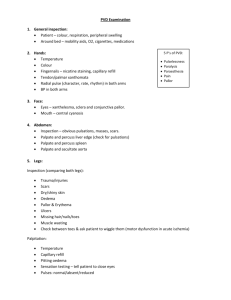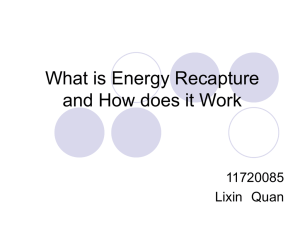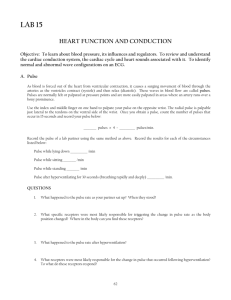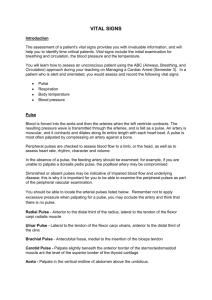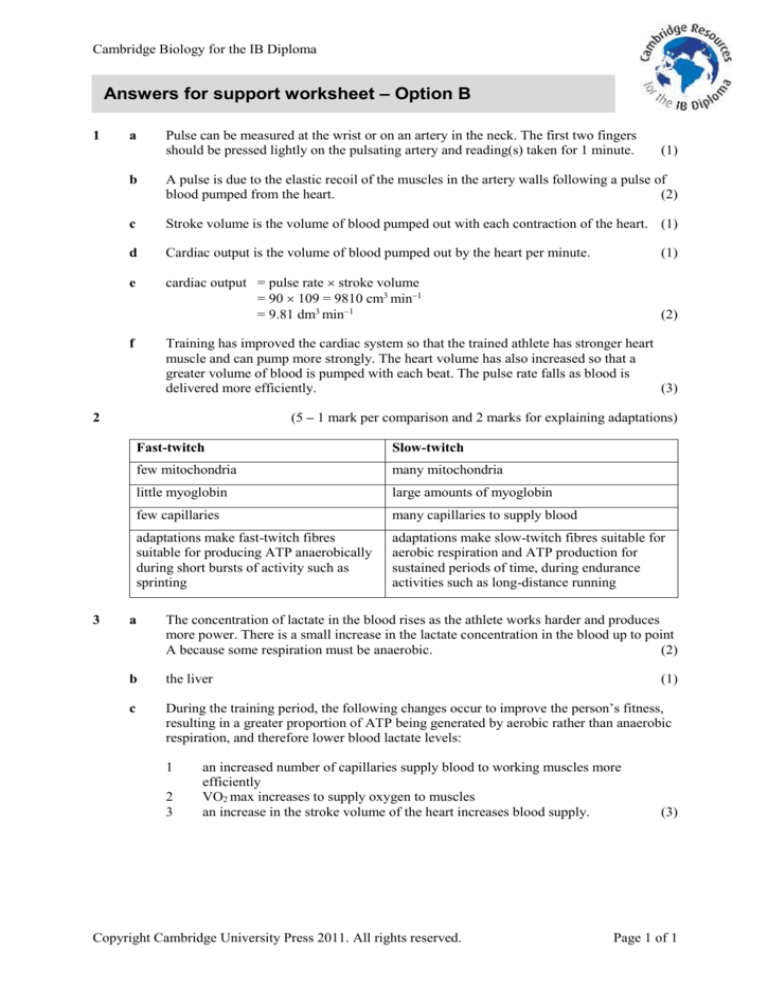
Cambridge Biology for the IB Diploma
Answers for support worksheet – Option B
1
a
Pulse can be measured at the wrist or on an artery in the neck. The first two fingers
should be pressed lightly on the pulsating artery and reading(s) taken for 1 minute.
b
A pulse is due to the elastic recoil of the muscles in the artery walls following a pulse of
blood pumped from the heart.
(2)
c
Stroke volume is the volume of blood pumped out with each contraction of the heart. (1)
d
Cardiac output is the volume of blood pumped out by the heart per minute.
(1)
e
cardiac output = pulse rate stroke volume
= 90 109 = 9810 cm3 min1
= 9.81 dm3 min1
(2)
f
Training has improved the cardiac system so that the trained athlete has stronger heart
muscle and can pump more strongly. The heart volume has also increased so that a
greater volume of blood is pumped with each beat. The pulse rate falls as blood is
delivered more efficiently.
(3)
(5 – 1 mark per comparison and 2 marks for explaining adaptations)
2
3
(1)
Fast-twitch
Slow-twitch
few mitochondria
many mitochondria
little myoglobin
large amounts of myoglobin
few capillaries
many capillaries to supply blood
adaptations make fast-twitch fibres
suitable for producing ATP anaerobically
during short bursts of activity such as
sprinting
adaptations make slow-twitch fibres suitable for
aerobic respiration and ATP production for
sustained periods of time, during endurance
activities such as long-distance running
a
The concentration of lactate in the blood rises as the athlete works harder and produces
more power. There is a small increase in the lactate concentration in the blood up to point
A because some respiration must be anaerobic.
(2)
b
the liver
c
During the training period, the following changes occur to improve the person’s fitness,
resulting in a greater proportion of ATP being generated by aerobic rather than anaerobic
respiration, and therefore lower blood lactate levels:
1
2
3
(1)
an increased number of capillaries supply blood to working muscles more
efficiently
VO2 max increases to supply oxygen to muscles
an increase in the stroke volume of the heart increases blood supply.
Copyright Cambridge University Press 2011. All rights reserved.
(3)
Page 1 of 1



